| Canada |
| Canada | Picture Description |
|---|---|
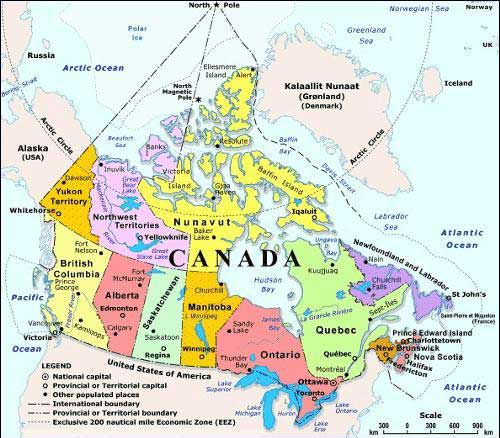 |
Map of Canada
Population : 32,805,041 (2005) Median age: 38.54 years Fertility rate: 1.61 children/woman(04) Currency: Canadian Dollar (CAD) GDP per capita: PPP $32,800 (2005) Population below poverty line: 15.9% Labor force - by occupation: Agriculture 2.2%, Industry 29.1%, Services 68.7% Source : CIA Factbook |
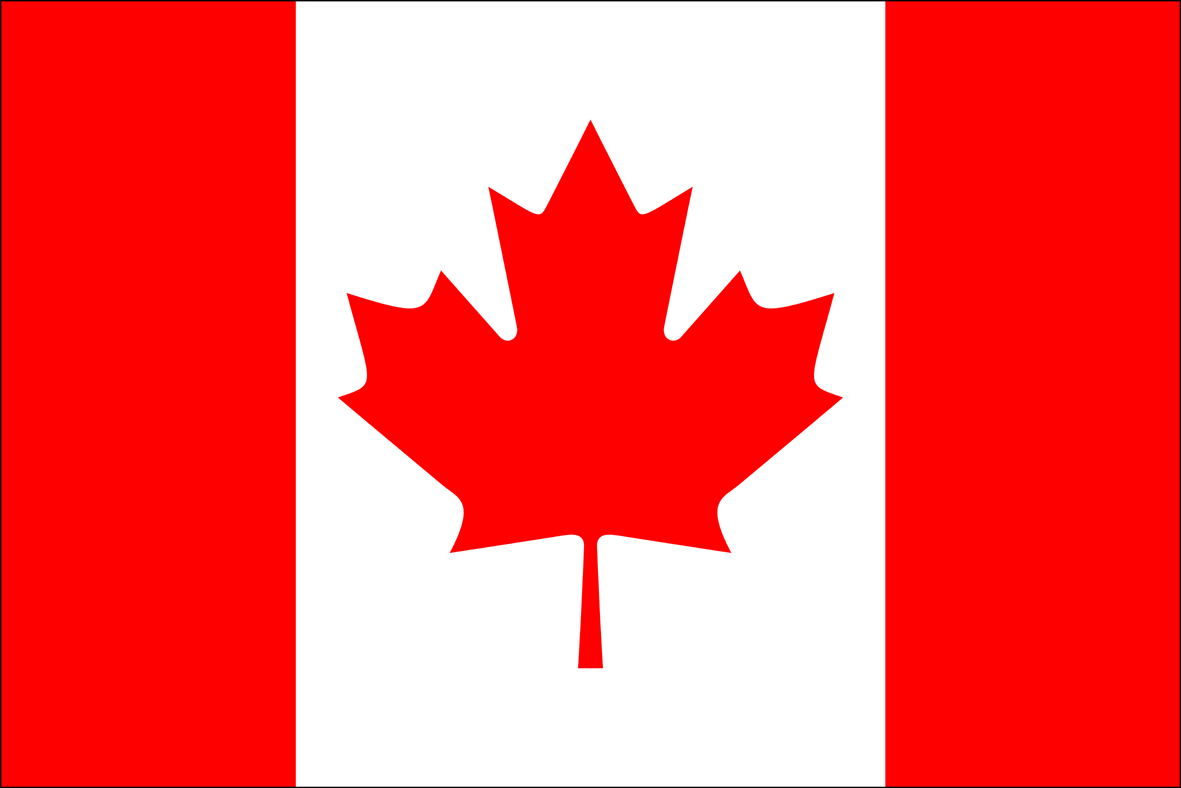 |
The National Flag of Canada
A land of vast distances and rich natural resources, Canada became a self-governing dominion in 1867 while retaining ties to the British crown. Economically and technologically the nation has developed in parallel with the US, its neighbor to the south across an unfortified border. Canada's paramount political problem is meeting public demands for quality improvements in health care and education services after a decade of budget cuts. Canada also faces questions about integrity in government following revelations regarding a corruption scandal in the federal government which has helped revive the fortunes of separatists in predominantly francophone Quebec. |
| Vancouver
Location: Canada, British Columbia A seaplane offers views of the spectacular landscape that is Canada. | |
| Vancouver
Location: Canada, British Columbia Canada is a beautiful, clean, ecotopia. Vancouver is randomly dotted with beautiful mini manmade waterfalls. | |
| Vancouver
Location: Canada, British Columbia A gazebo in in the China Gargen in Vancouver | |
| Vancouver
Location: Canada, British Columbia China Garden | |
| Vancouver
Location: Canada, British Columbia A round portal | |
| Vancouver
Location: Canada, British Columbia A round portal | |
| Vancouver
Location: Canada, British Columbia A window/frame shot of the park. | |
| Vancouver
Location: Canada, British Columbia A meditation garden. | |
| Vancouver
Location: Canada, British Columbia More portal shots | |
| Vancouver
Location: Canada, British Columbia More portal shots | |
| Vancouver
Location: Canada, British Columbia Earth gate | |
| Vancouver
Location: Canada, British Columbia Moon gate. | |
| Vancouver
Location: Canada, British Columbia Library | |
| Capilano Bridge
Location: Canada, British Columbia Take a walk on the world's longest pedestrian suspension bridge. | |
| Capilano Bridge
Location: Canada, British Columbia The capilano suspension bridge can be reached by public transportation from Vancouver. It is a short hop, skip and a jump away from the city. | |
| Capilano Bridge
Location: Canada, British Columbia The 450 foot (137 meters) long bridge is suspended 230 feet (70 meters) in the air. | |
| Whistler
Location: Canada, British Columbia Breath taking views at Whistler Park. | |
| Whistler
Location: Canada, British Columbia During the winter this is a ski resort, but in summer you can rent a bicycle and ride around and take in gorgeous views of the canadian scenery. | |
| Whistler
Location: Canada, British Columbia Clean, inviting and friendly. | |
| Victoria
Location: Canada, British Columbia This is Madam Tassaud's Wax Museum in Victoria (the capital of Canada) | |
| Craigdaroch
Location: Canada, British Columbia Craigdaroch castle. | |
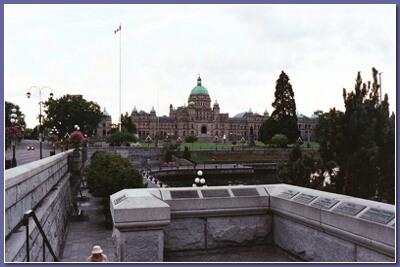 |
Victoria
Location: Canada, British Columbia This is Victoria the capital of Canada. |
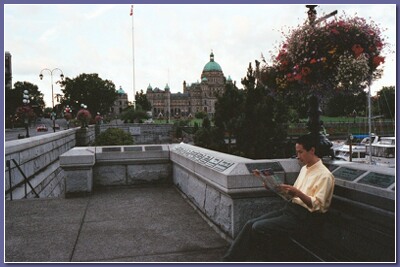 |
Victoria
Location: Canada, British Columbia Both Victoria and Vancouver were beautiful cities, clean, inviting, eco-conscious and modern. |
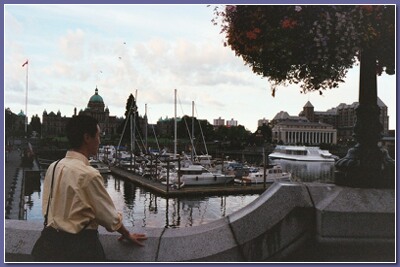 |
Victoria
Location: Canada, British Columbia More views of the parliament buildings. |
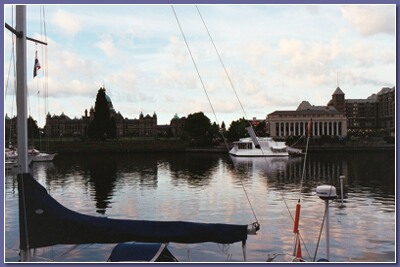 |
Victoria
Location: Canada, British Columbia |
| MONTREAL QUEBEC CANADA Oct 2024 | |
| Parc du Mont Royal
Location: Montreal, Quebec, Canada Mount Royal is a mountain in Montreal, just west of Downtown Montreal. Montreal’s name derived from the mountain's name. It is part of the Monteregian Hills and its Latin name, Mons Regius, is related to the Monteregian chain. It has three peaks: Colline de la Croix (or Mont Royal proper) at 233 m (764 ft), Colline d'Outremont (or Mount Murray) at 211 m (692 ft), and Westmount Summit at 201 m (659 ft) elevation. Mount Royal Park was inaugurated in 1876 and designed by Frederick Law Olmsted (who co-designed New York City's Central Park). He planned to emphasize the mountainous topography using vegetation. Shade trees at the bottom of the carriage path would resemble a valley. As the visitor went higher, the vegetation would get sparser giving illusion of height. The park has two belvederes, Kondiaronk Belvedere, a semicircular plaza with a Mount Royal Chalet overlooking Downtown Montreal. Built in 1906, it is named for the Petun chief Kondiaronk, whose influence led to the Great Peace of Montreal in 1701. Other features of the park are Beaver Lake (an artificial lake), a toboggan run, cross-country skiing trails, a sculpture garden and Smith House. It also features the George-Etienne Cartier Monument and a gazebo named in honor of Mordecai Richler. | |
| Expo 67 Biosphere
Location: Montreal, Quebec, Canada The 1967 International and Universal Exposition, known as Expo 67 ran from April 28 to October 29, 1967. It was one of the most attended World's Fairs of the 20th century with 62 nations participating. It set a world's fair single-day attendance record with 569,500 visitors on its third day. At first, the project was not well received. It took the determination of Montreal's mayor, Jean Drapeau to navigate the political and physical hurdles. After Expo 67 ended in October 1967, the site and its pavilions continued as an exhibition called Man and His World, running from 1968 until 1984. By 1984, most of the buildings were dismantled. Today, the islands that hosted the world exhibition are a park with only a few remaining structures left as evidence of the World’s Fair. Expo 67 featured 90 pavilions representing Man and His World themes. The U.S. pavilion, a geodesic dome designed by Buckminster Fuller. There were 17 theme elements for Man and his World: Du Pont Auditorium, Habitat 67, Labyrinth, Man and his Health, Man in the Community, Man the Explorer, Man the Creator, Man the Producer, Man the Provider | |
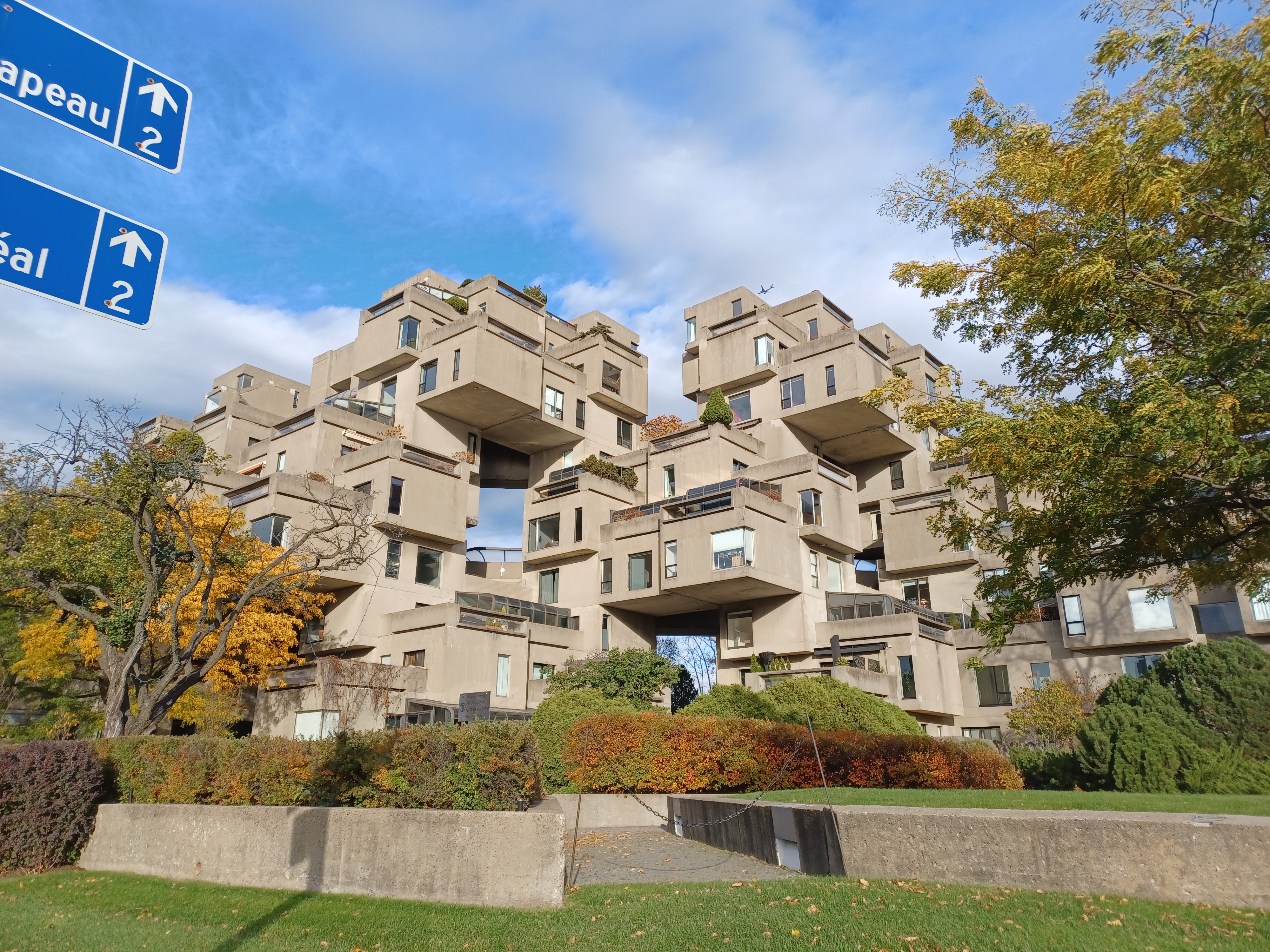 |
Habitat 67
Location: Montreal, Quebec, Canada Expo 67 also featured the Habitat 67 modular housing complex designed by architect Moshe Safdie, which was later purchased by private individuals and is still occupied. |
 |
Notre Dame Basilica
Location: Montreal, Quebec, Canada Notre-Dame Basilica is a minor basilica of the Catholic Church in the historic Old Montreal district. It is located at 110 Notre-Dame Street West situated next to the Saint-Sulpice Seminary and faces the Place d'Armes square. The interior of the church is amongst the most dramatic in the world and regarded as a masterpiece of Gothic Revival architecture. The vaults are colored deep blue and decorated with golden stars. It is filled with hundreds of intricate wooden carvings and religious statues. The stained glass windows along the walls of the sanctuary do not depict biblical scenes, but rather scenes from the religious history of Montreal. It also has a Casavant Freres pipe organ, dated 1891, which comprises four keyboards, 99 stops using electromagnetic action and an adjustable combination system, 7000 individual pipes, and a pedal board. Approximately 11 million people visit Notre-Dame Basilica every year, making it one of the most visited monuments in North America. In 2023, Notre-Dame was named the 6th most beautiful building in the world by Angi. |
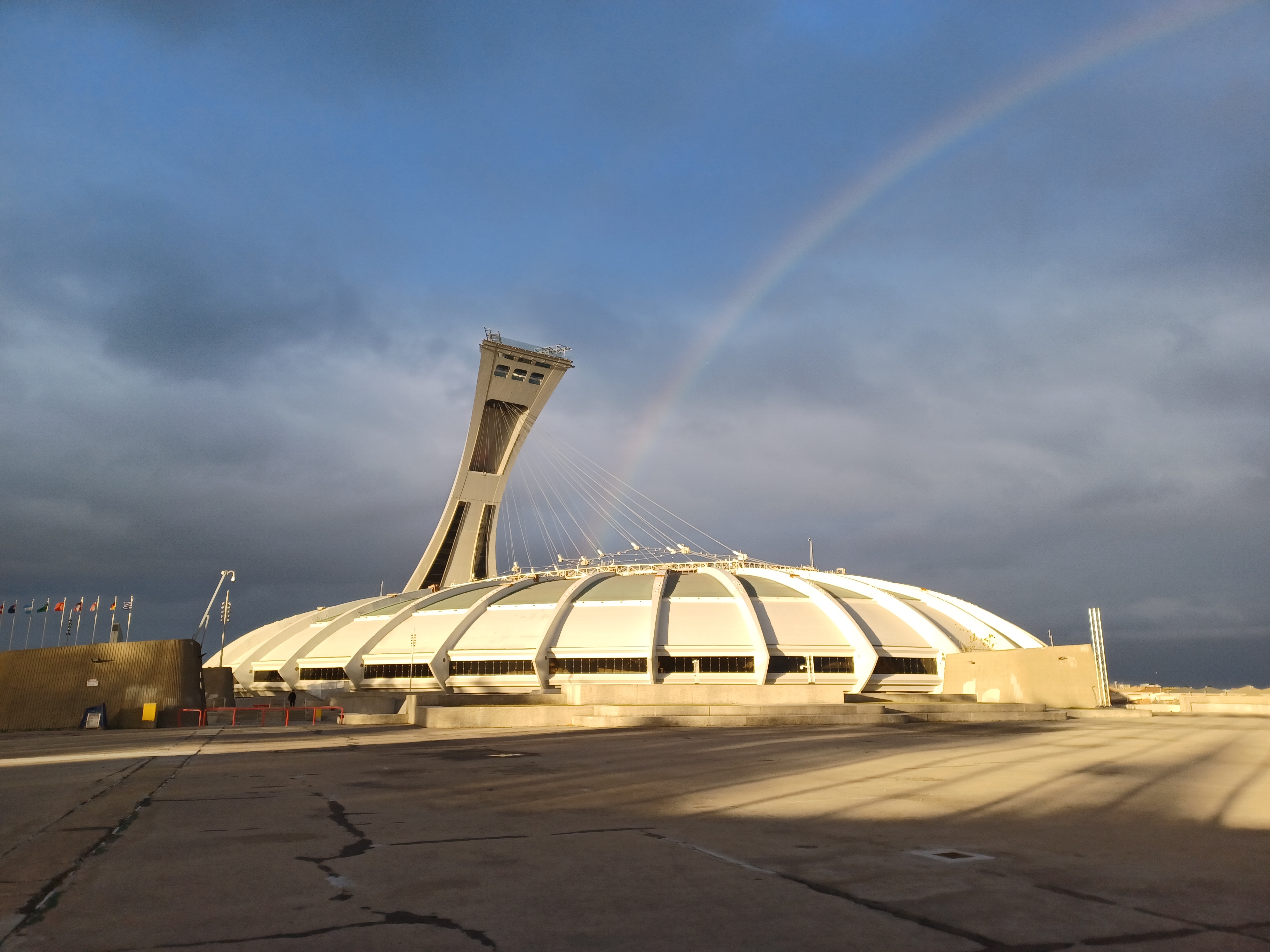 |
1976 Olympic Stadium
Location: Montreal, Quebec, Canada Olympic Stadium is a multi-purpose stadium located at Olympic Park in the Hochelaga-Maisonneuve district of the city. Built in the mid-1970s as the main venue for the 1976 Summer Olympics, it is nicknamed "The Big O", a reference to both its name and to the doughnut-shape of the permanent component of the stadium's roof. The stadium is one of the largest by seating capacity in Canada. After the Olympics, artificial turf was installed and it became the home of Montreal's professional baseball and football teams. They used the Stadium for playoff and Grey Cup games until 2012. In 2004, the Expos relocated to Washington, D.C., to become the Washington Nationals. The stadium currently serves as a multipurpose facility for special events (e.g. concerts, trade shows) with a permanent seating capacity of 56,040. CF Montreal of Major League Soccer (MLS) has used the venue when demand for tickets justifies the large capacity or when the weather restricts outdoor play at Saputo Stadium. The stadium has not had a main tenant since the Expos left in 2004. The stadium's history of structural and financial problems has branded it a white elephant. Incorporated into the north base of the stadium, inclined at 45', and not completed until a full decade after the stadium's opening, is the Montreal Tower. At 165 metres (541 ft) it is the world's tallest inclined tower. |
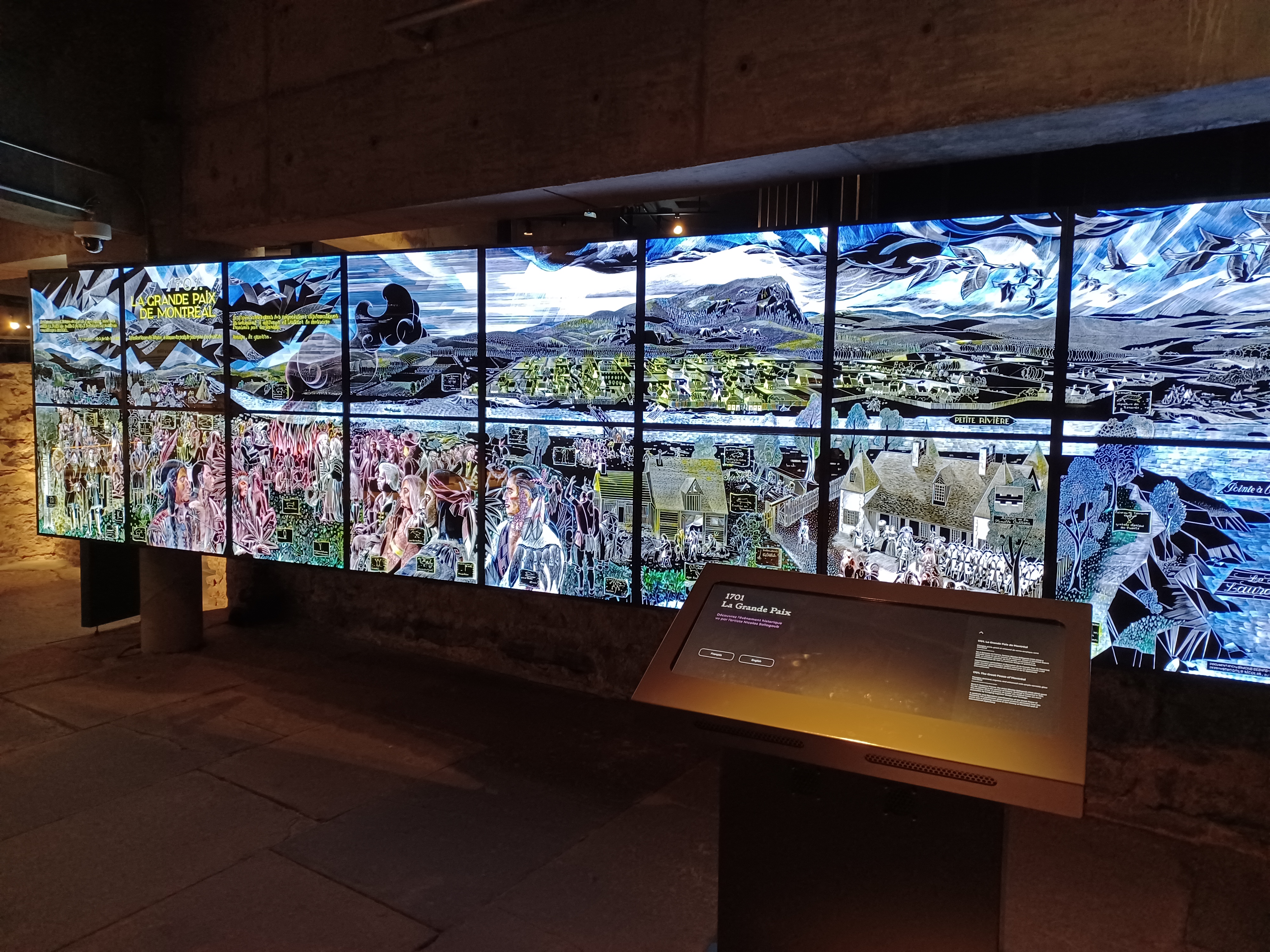 |
Pointe A Calliere
Location: Montreal, Quebec, Canada Pointe-a-Calliere Museum is a museum of archaeology and history of Montreal. It was founded in 1992 as part of Montreal's 350th birthday celebrations. The museum has artifacts from the First Nations of the Montreal region illustrating how cultures interacted, and how the French and British empires influenced their history. It receives 350,000 visitors a year. 4.5 million people have come to the museum since it opened in 1992. It has received fifty national and international awards, including those in museography, architecture, cultural, educational and community activities. The museum complex comprises three archaeological sites: Pointe-a-Calliere, Place Royale and Place d'Youville. It has the archaeological field school at Fort Ville-Marie; Montreal's first Catholic cemetery; the William collector sewer; an archaeological crypt: Place Royale; a heritage building: the former Youville Pumping Station; Place d’Youville, the Mariners House; and archaeological collections of over a million objects. The site of Pointe-a-Calliere Museum building site was once the Royal Insurance Building, and also Montreal’s second Customs House from 1871 to 1917. |
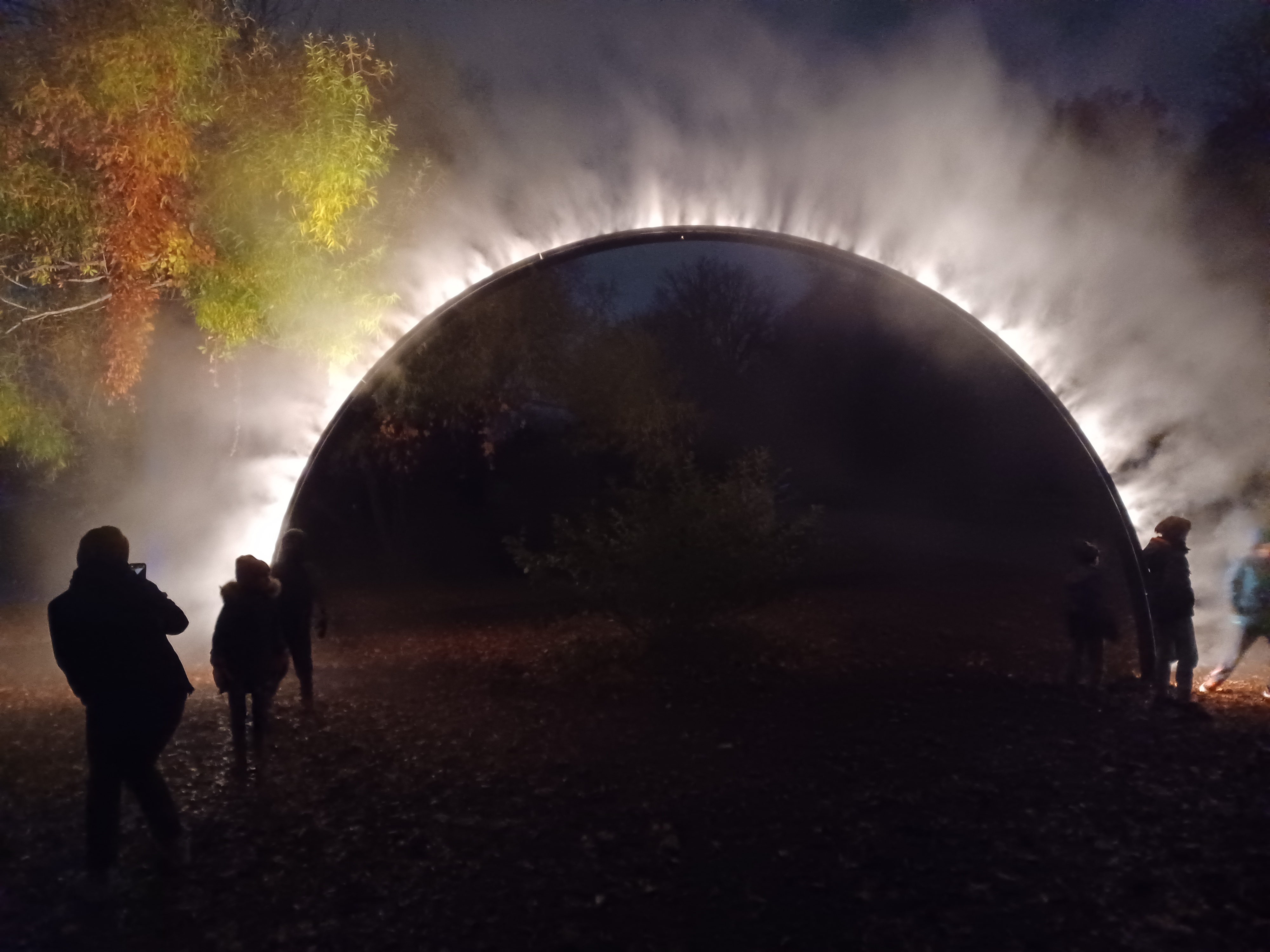 |
Jardin de Lumiere (Garden of Lights) Espace pour la vie
Location: Montreal, Quebec, Canada The Garden of Lights is located at Montreal’s Botanical Garden; and it lights up at nightfall. It runs from September to October each year. There are Chinese, Japanese and First Nations themed gardens. The meandering footpaths are set ablaze in a brilliance of colors with delicate silk lanterns and ethereal light projections. |
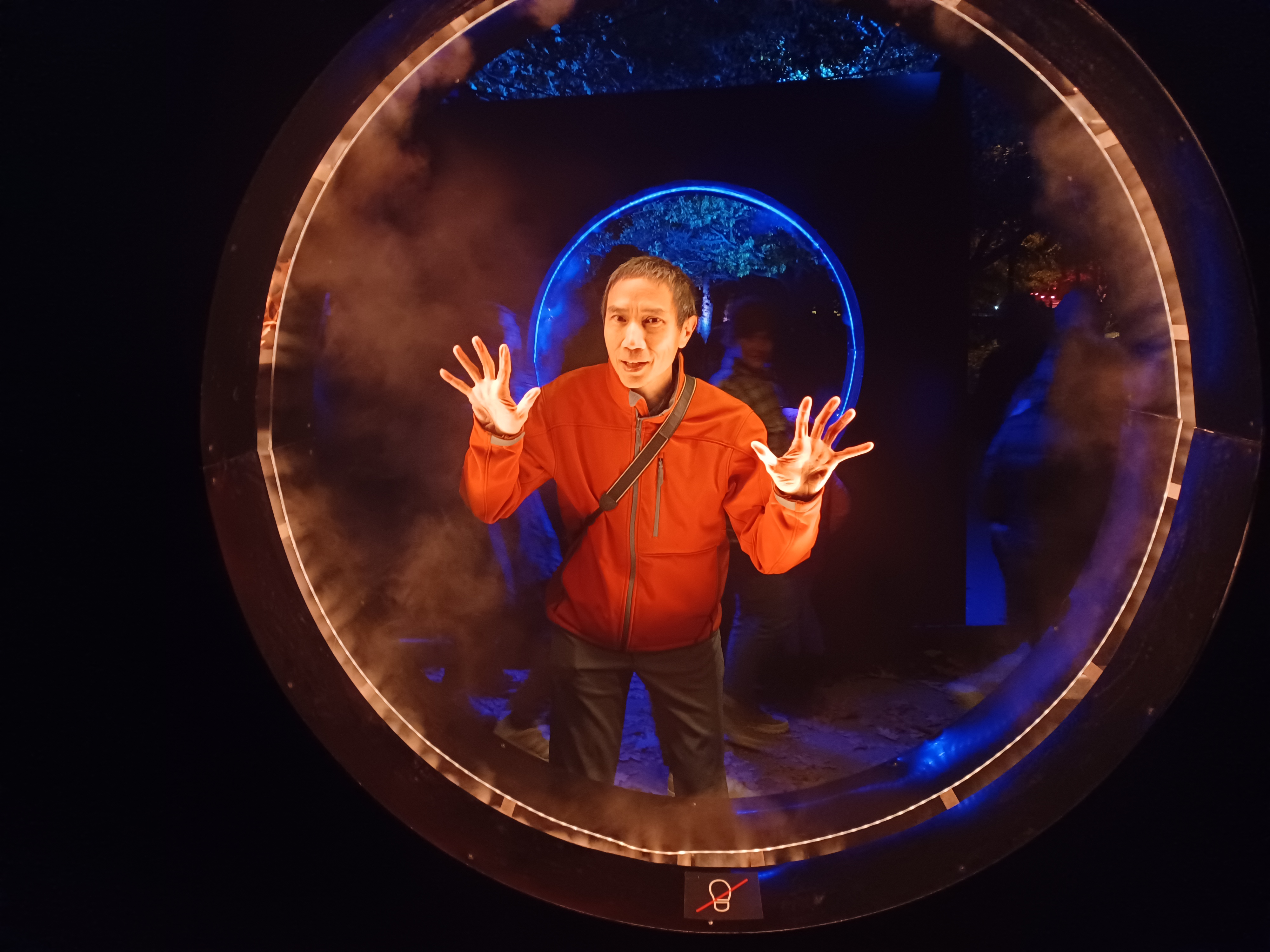 |
Jardin de Lumiere (Garden of Lights) Espace pour la vie
Location: Montreal, Quebec, Canada The Chinese Garden gets decked out to tell a traditional tale, drawn from Chinese mythology. The Japanese Garden is a perfect site for quiet Zen contemplation. The First Nations Garden focuses on the Sacred Tree (a poplar). It represents the circle of life, the birth of seasons and nature's perpetual transformations. |
| Montreal Underground City
Location: Montreal, Quebec, Canada RESO, also the Underground City (French: La ville souterraine), is a series of interconnected office towers, hotels, shopping centers, residential and commercial complexes, convention halls, universities and performing arts venues at the heart of Montreal's central business district. The underground connections compose the network, and integrate with the city's transit system, the Montreal Metro. Key passageways and access points are at ground level and there is a skybridge. However, vast commercial sectors are located entirely underground. The network is useful during winter when half a million people use it every day. It is climate controlled and well-lit. There are 32 kilometers (20 miles) of tunnels over 12 square kilometers (4.6 sq miles) of the most densely populated part of Montreal. There are 120 exterior access points to the network, and sixty Metro station entrances located outside the official limits of the RESO. | |
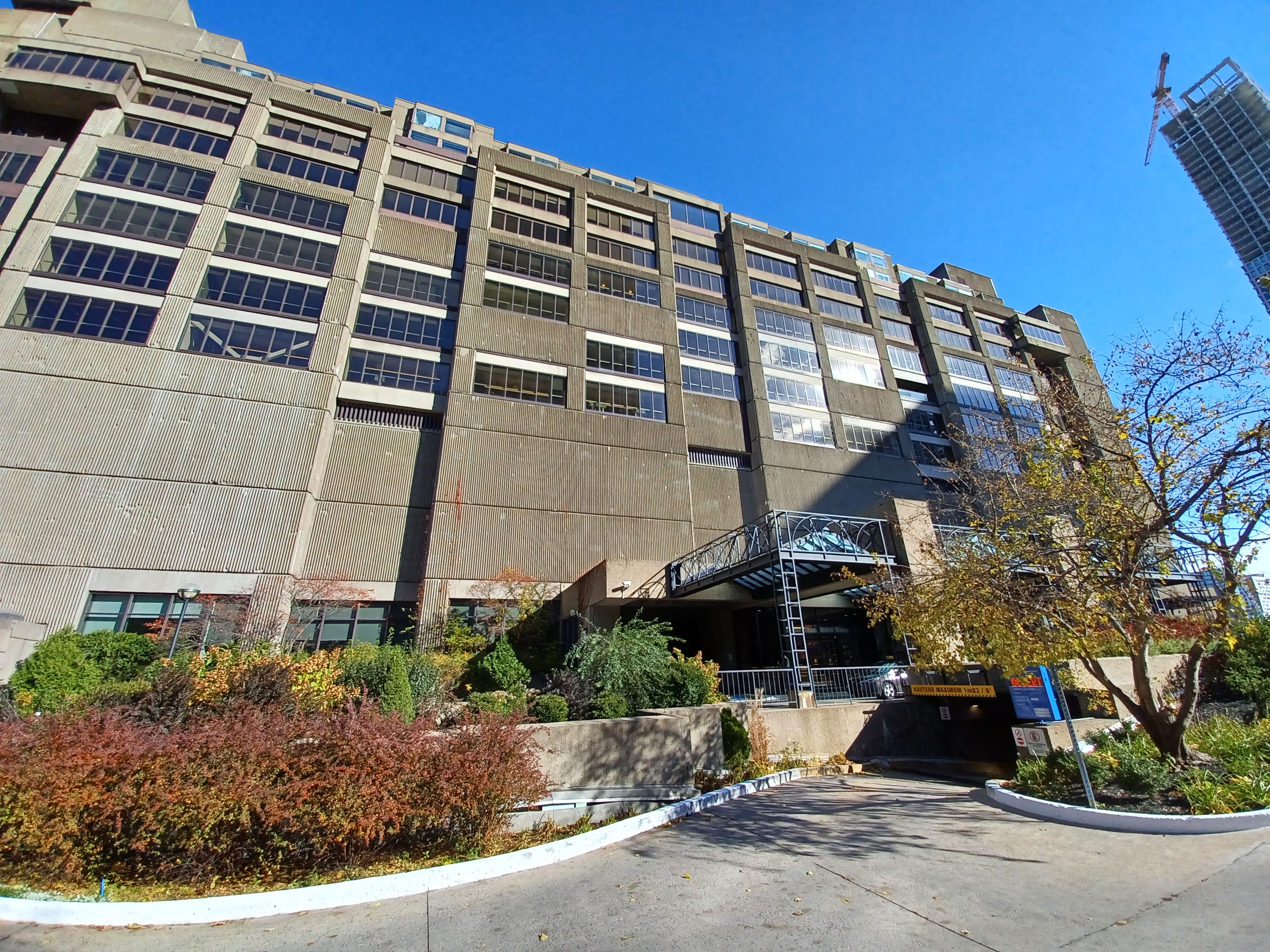 |
Hotel Bonaventure
Location: Montreal, Quebec, Canada The Bonaventure Hotel appears as an unassuming post-industrial cinder block. It has won awards for its high-quality service. Its sumptuous 2.5 acres of gardens with streams inhabited by ducks and fish as well as a year-round outdoor heated pool give this hotel a distinctive personality. Nestled on the top two floors of Place Bonaventure, the hotel is situation at the center of the city's top downtown attractions and directly connects to the Montreal Metro and Underground City. |
 |
The Ring
Location: Montreal, Quebec, Canada The Ring is a sculpture located at the Place Ville Marie in Montreal, designed by Claude Cormier and erected in June 2022. The sculpture weighs around 23,000 kilograms (51,000 lb), spans 30 metres (98 ft) and cost over CA$5,000,000. The sculpture is heated to prevent snow buildup, and has vibration dampers to prevent damage during high winds and earthquakes. |
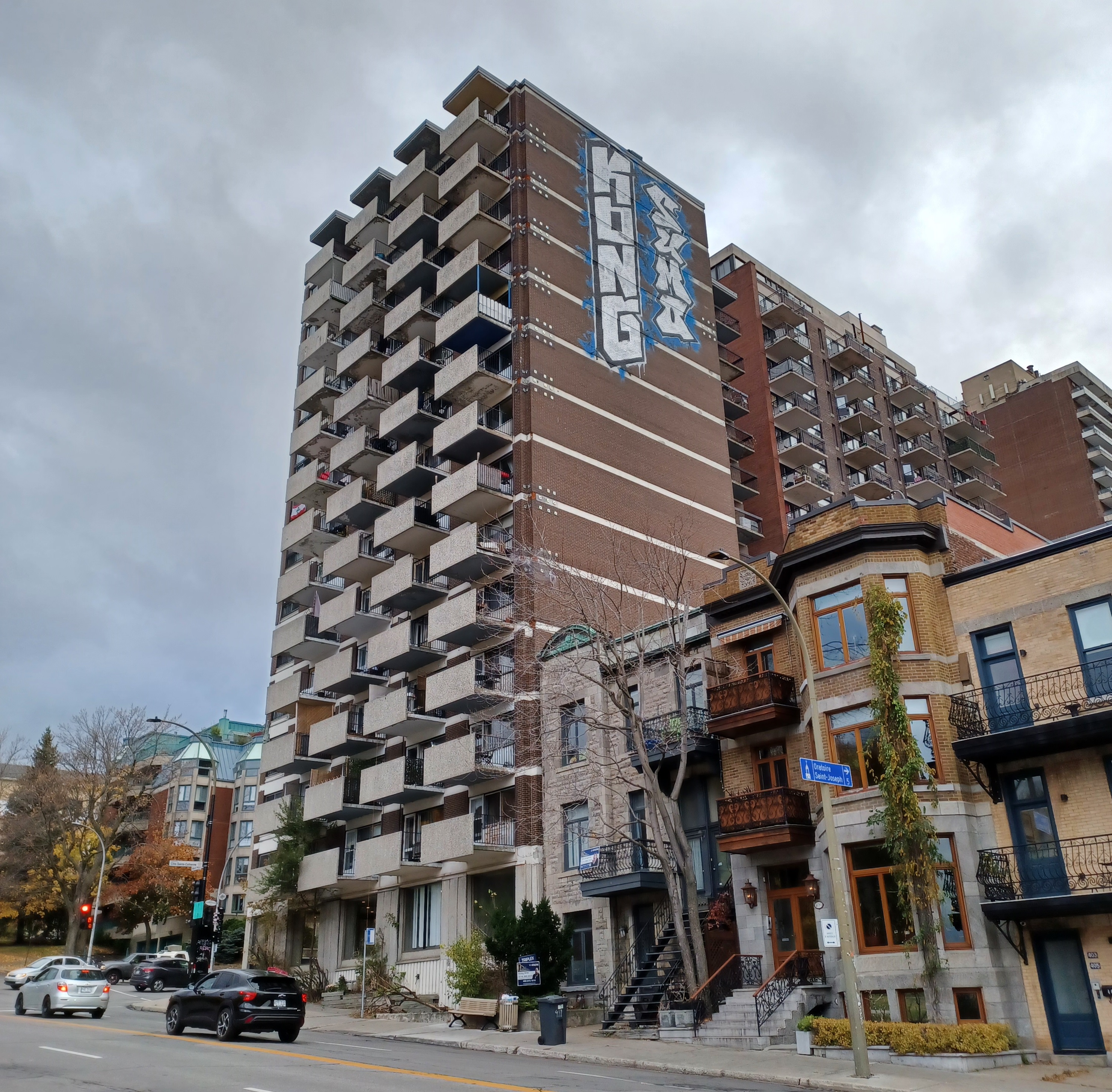 |
Graffiti
Location: Montreal, Quebec, Canada I saw Graffiti on the side of 3 buildings. Pictured here a residential complex on the way to Parc du Mont Royal. "Kong Sumo" is a thing (look it up). But this is 130 feet up! A very dedicated Garffiti artist did the climb. |